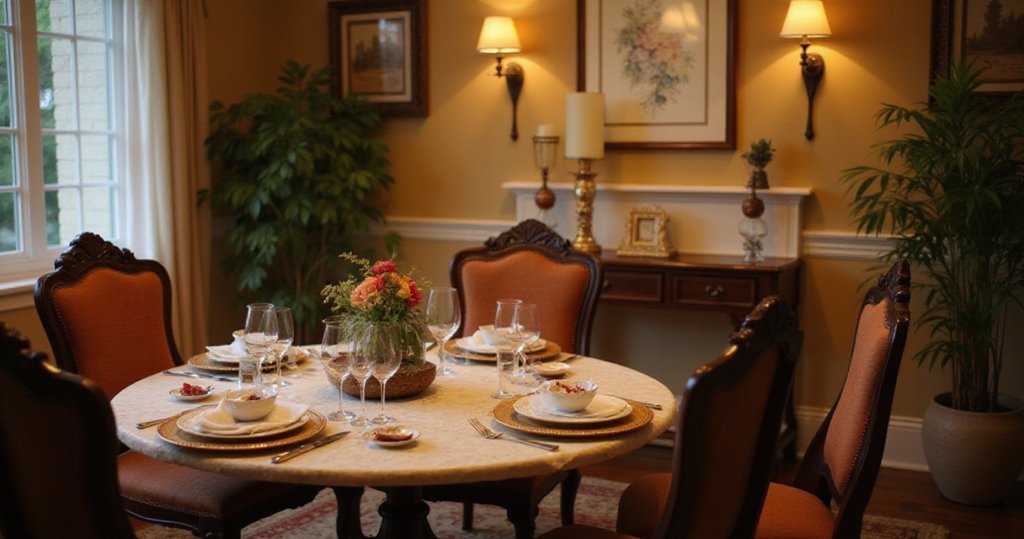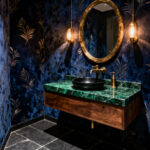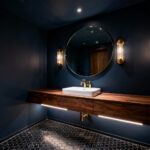Creating a dining room that truly serves your family’s needs while reflecting your personal style requires more than just placing a table and chairs in a room. As a wellness design consultant, I’ve witnessed how thoughtfully designed dining spaces can transform not just meals, but the entire rhythm of family life. The dining room becomes a sanctuary where conversations flow naturally, stress melts away, and every gathering feels intentionally crafted for connection and well-being.
Your dining room has the potential to be so much more than a functional eating space. It can become the emotional heart of your home—a place where morning coffee tastes better in natural light, where dinner parties feel effortlessly elegant, and where even simple weeknight meals become moments of mindful presence. The key lies in understanding how each design element contributes to both the room’s aesthetic appeal and its ability to support healthy, joyful living.
Whether you’re starting with a blank slate or refreshing an existing space, these dining room decorating ideas will help you create an environment that nourishes both body and soul. Let’s explore how thoughtful design choices can transform your dining experience and enhance your home’s wellness quotient.
1. Determine Optimal Table Size for Comfortable Seating
The foundation of any successful dining room begins with selecting a table that properly serves your household’s needs while maintaining comfortable circulation throughout the space. This isn’t simply about fitting the largest possible table into your room—it’s about creating a harmonious balance between seating capacity, personal space, and the natural flow of movement that makes a dining area feel welcoming rather than cramped.

A correctly proportioned dining table ensures each person has adequate elbow room (24-30 inches per diner) while maintaining clear pathways around the perimeter. This attention to spatial relationships directly impacts the stress levels of everyone using the space. When family members can move freely without bumping into chairs or feeling crowded, meals naturally become more relaxed and enjoyable. The psychological comfort of having sufficient personal space at the table encourages longer conversations and creates an atmosphere where everyone feels at ease.
Key measurements to consider:
- Minimum 36 inches clearance from table edge to walls or furniture
- 24-30 inches width per person at the table
- 18-24 inches depth needed for each place setting
As afternoon light filters through your dining room windows, these carefully planned proportions create natural gathering spaces that feel both intimate and spacious, setting the stage for countless memorable meals ahead.
2. Select Dining Chairs That Blend Style with Ergonomic Comfort
The chairs surrounding your dining table serve as the foundation for every meal experience, directly influencing how long guests want to linger and how comfortable family members feel during extended conversations. Beyond their obvious functional role, dining chairs contribute significantly to your room’s aesthetic while supporting the physical well-being of everyone who uses them.
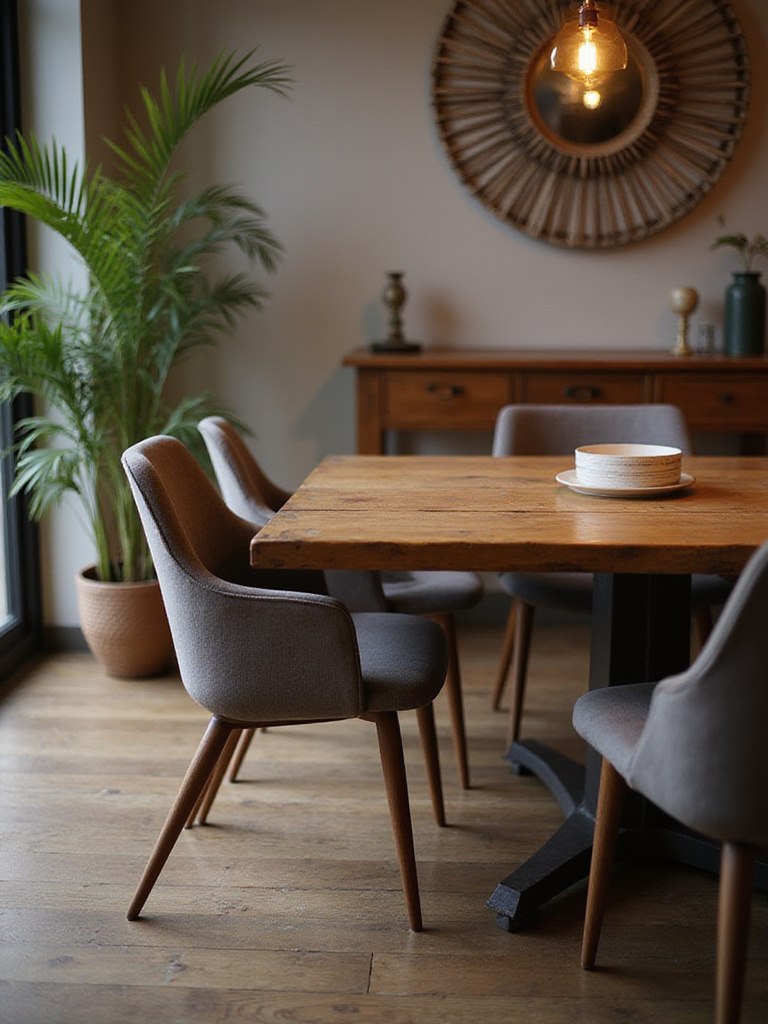
Ergonomically designed chairs reduce physical strain and promote better posture, which becomes especially important during longer meals or when the dining room doubles as a workspace. Look for seats with proper lumbar support, appropriate seat depth (16-20 inches), and cushioning that maintains its shape over time. The material choices you make—whether upholstered fabric, leather, or wood—should align with your household’s lifestyle while contributing to the room’s overall wellness goals.
Essential comfort features:
- Seat height of 17-19 inches for standard table compatibility
- Adequate back support to encourage proper posture
- Durable, easy-to-clean materials for long-term satisfaction
The interplay between comfort and style becomes evident when you discover chairs that invite you to sit longer, fostering those precious moments when conversation flows naturally and meals become true celebrations of connection.
3. Define Your Dining Zone with a Perfectly Sized Area Rug
An appropriately sized area rug serves as both a visual anchor and a practical foundation for your dining space, creating clear boundaries while adding warmth and acoustic comfort to the room. The right rug choice can transform hard surfaces into a more inviting environment that encourages relaxation and reduces noise levels during lively dinner conversations.
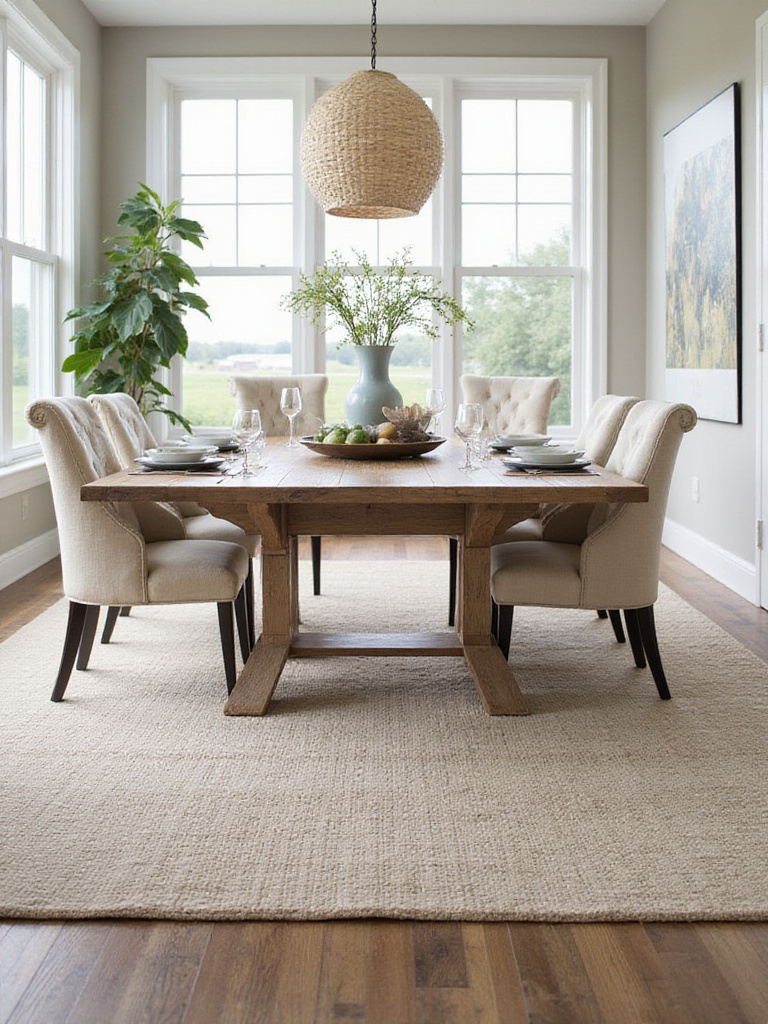
The key to success lies in selecting a rug large enough to accommodate all dining chairs, even when pulled out from the table. This ensures visual continuity and prevents the awkward appearance of chairs sitting partially on and off the rug. Beyond aesthetics, rugs contribute to the room’s acoustic properties by absorbing sound and reducing echo, creating a more intimate atmosphere that supports comfortable conversation.
Sizing guidelines for optimal results:
- Add 24-36 inches beyond pulled-out chairs on all sides
- Choose materials like wool or jute for durability in high-traffic areas
- Consider low-pile options for easy maintenance and chair mobility
What surprises many homeowners is how this single addition can completely transform the energy of a dining space, creating a defined zone that feels both grounded and welcoming.
4. Choose a Cohesive Color Palette for Harmonious Flow
A thoughtfully curated color palette creates visual harmony that directly impacts the psychological comfort of your dining space. Colors influence our mood, appetite, and stress levels, making palette selection a crucial element in creating a dining room that truly supports well-being. The goal is to establish a foundation that feels both calming and energizing, depending on your family’s needs and preferences.
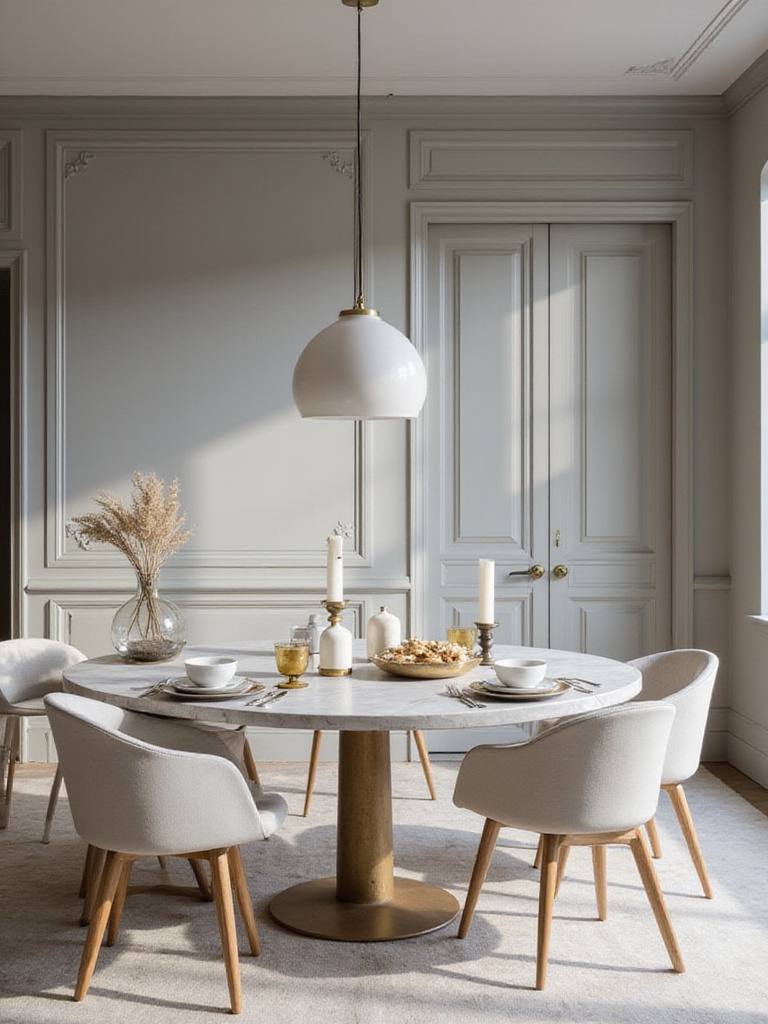
Working with a cohesive palette doesn’t mean everything must match perfectly—instead, it means selecting colors that complement each other and create a sense of intentional design. Consider how different lighting conditions throughout the day will affect your chosen colors, and test paint samples in various areas of the room before making final decisions.
Effective color distribution strategies:
- Apply the 60-30-10 rule: dominant color (60%), secondary color (30%), accent color (10%)
- Consider the psychological effects of different hues on appetite and conversation
- Test colors under both natural and artificial lighting conditions
The environmental story behind your color choices often reveals itself in unexpected ways—perhaps through the calming influence of sage green walls or the energizing effect of warm terracotta accents that make every meal feel like a celebration.
5. Install a Statement Chandelier for Grandeur and Focus
A well-chosen chandelier serves as the crown jewel of your dining room, providing both functional illumination and a dramatic focal point that elevates the entire space. The right fixture can transform an ordinary dining area into a room that feels special enough for both everyday family meals and important celebrations.
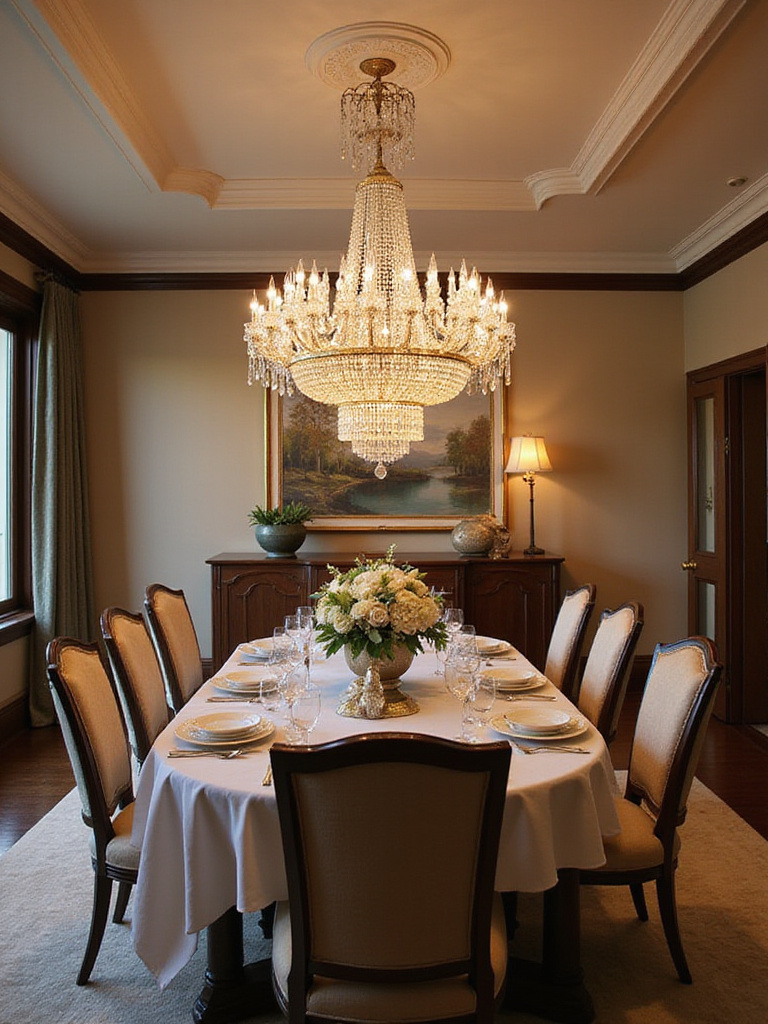
Beyond its visual impact, your chandelier choice affects the quality of light in the room, which directly influences mood and comfort during meals. Proper sizing and placement ensure adequate illumination while creating the kind of ambient lighting that makes food look more appealing and faces appear warm and welcoming.
Installation considerations:
- Hang 30-36 inches above the table for standard ceiling heights
- Choose a diameter roughly half to two-thirds the width of your table
- Install dimmer controls for versatile ambiance adjustment
The craftsmanship in quality lighting fixtures becomes apparent in how they distribute light evenly across the dining surface while casting a warm, inviting glow that makes every gathering feel more significant.
6. Incorporate Dimmable Lighting to Control Ambiance Easily
Dimmable lighting systems provide the flexibility to adjust your dining room’s atmosphere throughout the day, supporting everything from bright morning breakfasts to intimate evening dinners. This adaptability is essential for creating a space that truly serves your family’s varied needs while promoting comfort and well-being.
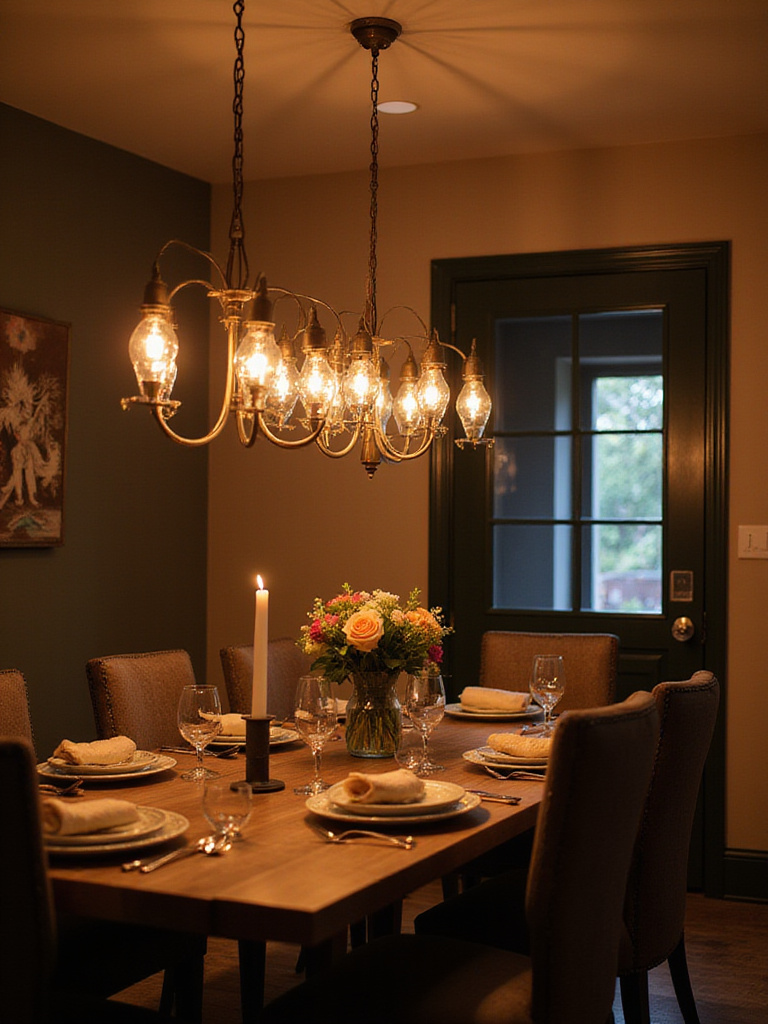
The ability to control light intensity allows you to create different moods for different occasions while also supporting your body’s natural circadian rhythms. Brighter light during morning meals can help energize family members for the day ahead, while softer evening lighting promotes relaxation and better digestion.
Benefits of adjustable lighting:
- Extends bulb lifespan by reducing heat and electrical stress
- Saves energy costs through reduced power consumption
- Supports natural circadian rhythm patterns
The subtle fragrance of dinner preparations fills the room while dimmed lights create an atmosphere that naturally slows the pace of eating, encouraging mindful consumption and deeper family connections.
7. Add Wall Sconces or Lamps for Layered, Ambient Lighting
Layered lighting creates depth and visual interest while providing the flexibility to illuminate different areas of your dining room for various activities. Wall sconces and accent lamps contribute to this layering by offering ambient light that softens shadows and creates a more welcoming atmosphere than overhead lighting alone.
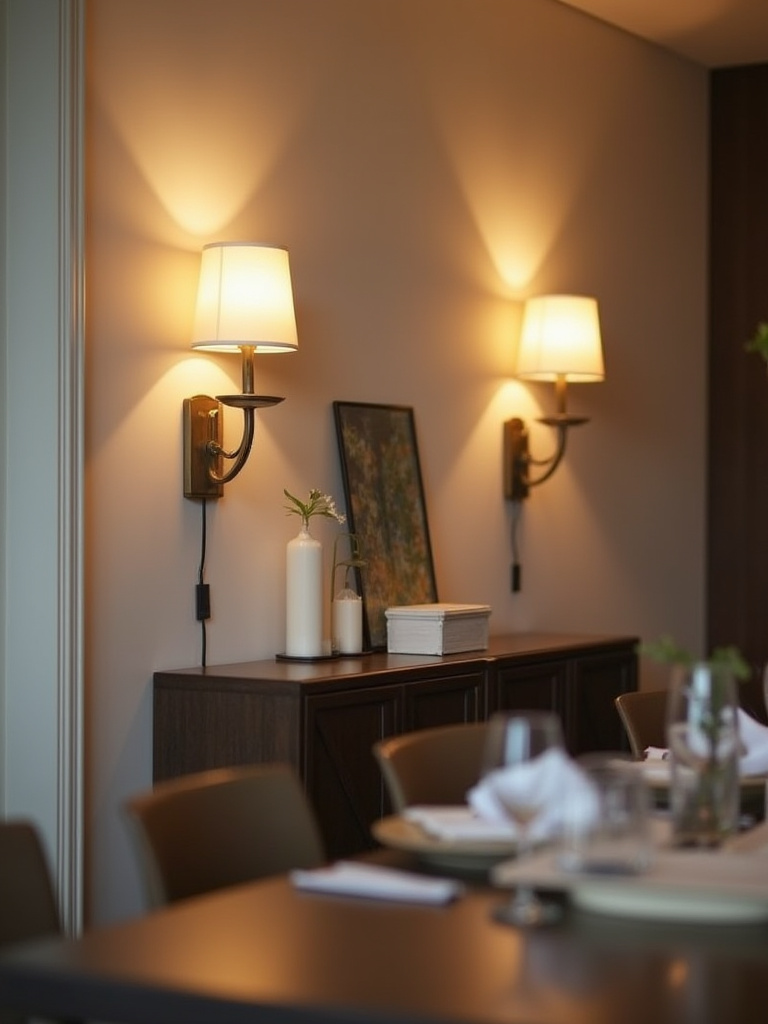
These supplementary light sources also serve as decorative elements that can highlight architectural features or artwork while providing practical illumination for serving areas or buffet tables. The key is positioning them at heights and locations that contribute to the room’s overall lighting scheme without creating glare or awkward shadows.
Strategic placement tips:
- Mount sconces at eye level (60-66 inches) to avoid glare
- Use warm-toned bulbs (2700K-3000K) for cozy ambiance
- Position fixtures to frame artwork or architectural features
The designer’s attention to detail shows in how carefully placed accent lighting can transform a simple dining room into a space that feels professionally curated and thoughtfully designed.
8. Drape Elegant Curtains to Frame Windows and Add Softness
Window treatments serve multiple functions in a dining room, from controlling natural light and providing privacy to adding essential softness that balances harder surfaces like tables and chairs. The right curtains can also influence the room’s acoustic properties, helping to absorb sound and create a more intimate dining environment.
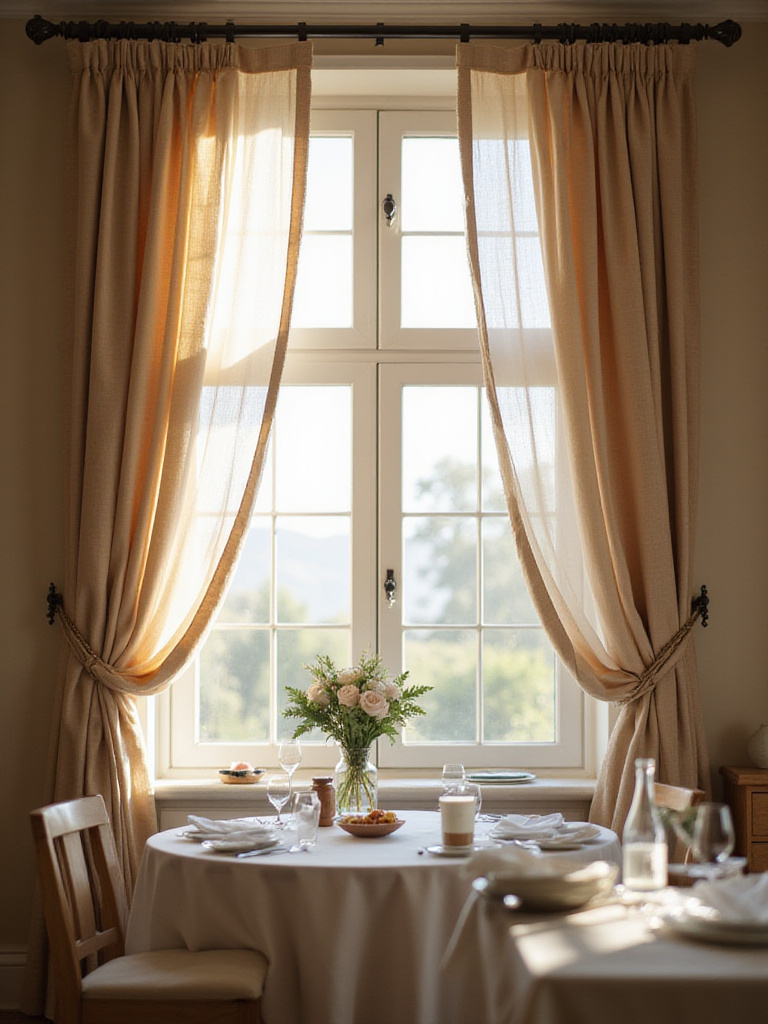
Properly hung curtains can make windows appear larger and ceilings higher, contributing to a more spacious feeling in the room. The fabric choice affects both the aesthetic and functional performance, with natural fibers like linen and cotton offering breathability and a relaxed elegance that works well in dining spaces.
Hanging guidelines for maximum impact:
- Mount rods 4-6 inches above window frames
- Extend rods 6-12 inches beyond window edges
- Allow curtains to just touch the floor or puddle slightly
As morning light filters through carefully chosen fabrics, the texture creates subtle patterns on nearby surfaces, adding visual interest and a sense of natural rhythm to your dining space.
9. Introduce Cushions and Upholstery for Added Comfort and Texture
Soft furnishings in the dining room serve both comfort and aesthetic purposes, making meals more enjoyable while adding visual warmth and texture to the space. Chair cushions, bench padding, and upholstered seating encourage longer conversations by providing physical comfort that supports extended sitting.
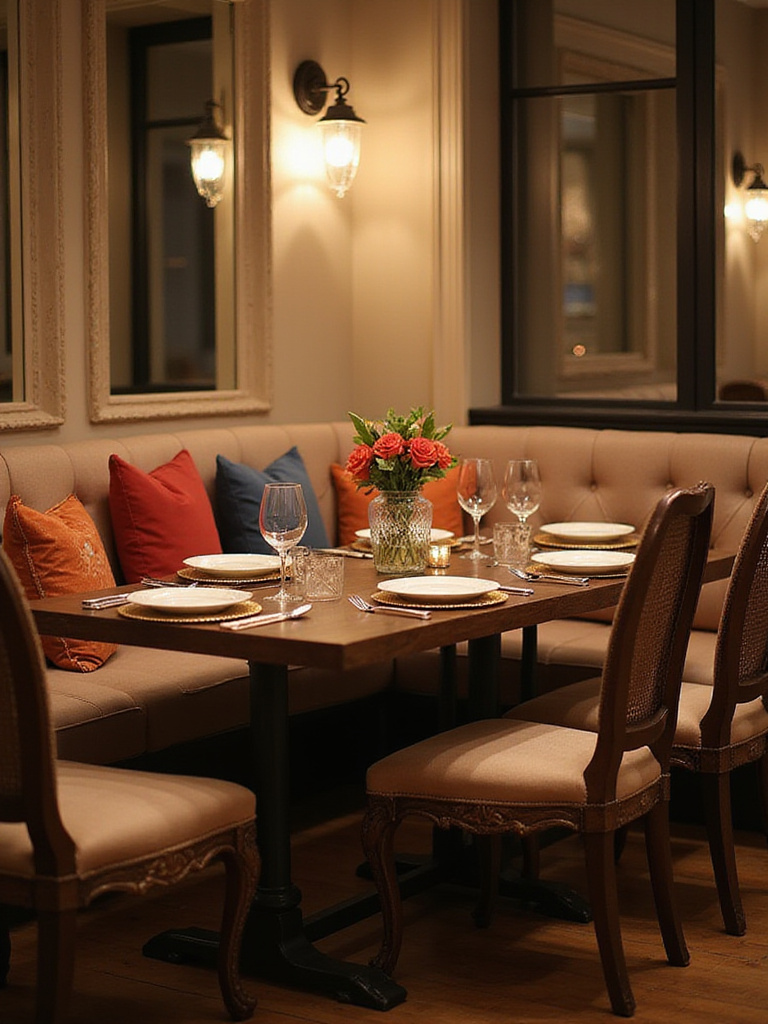
The fabric choices you make for dining room upholstery should balance comfort with practicality, considering factors like stain resistance, durability, and ease of cleaning. Performance fabrics now offer the look and feel of traditional textiles while providing superior protection against spills and wear.
Comfort and durability considerations:
- Choose high-density foam for cushions that maintain their shape
- Select stain-resistant fabrics for easy maintenance
- Consider removable covers for convenient cleaning
The tactile experience of quality upholstery changes the entire room’s energy, creating an environment where family members and guests naturally want to settle in and stay awhile.
10. Select Table Linens That Elevate Every Meal Occasion
Table linens provide the foundation for your dining presentation, transforming ordinary meals into special occasions while protecting your table surface from daily wear. The right linens can instantly change the mood of your dining room, making it feel more formal for special occasions or casual and welcoming for everyday family meals.
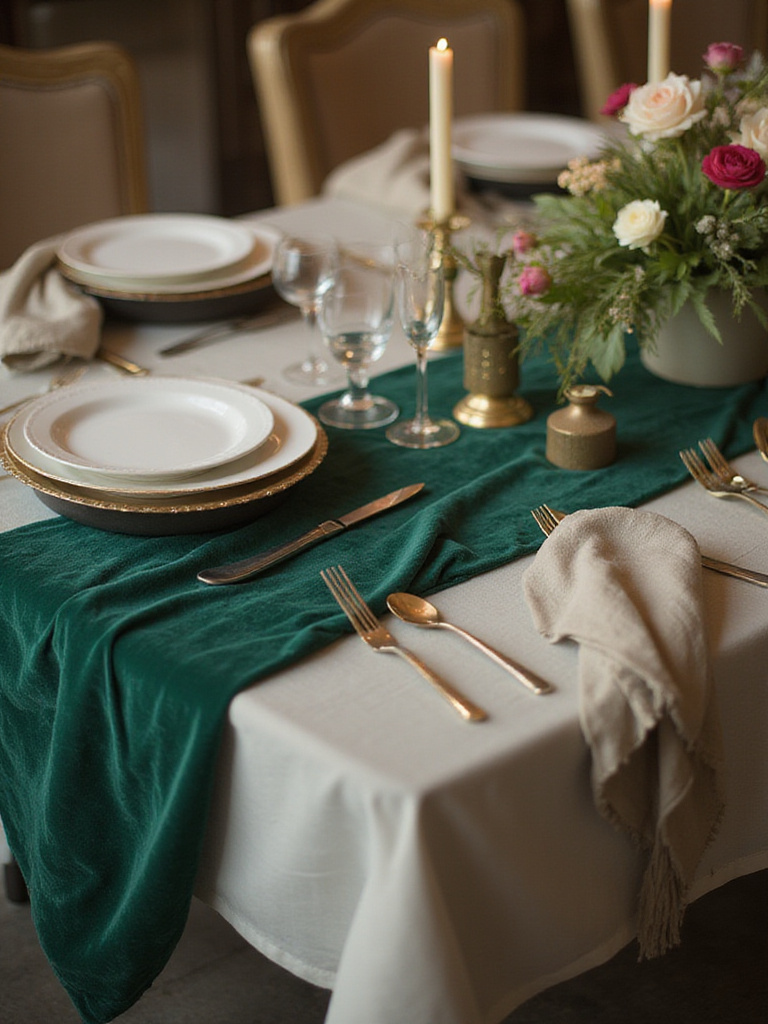
Quality linens also contribute to the sensory experience of dining, adding texture under your hands and creating visual layers that make food presentation more appealing. Natural fibers like linen and cotton offer breathability and improve with age, developing a soft patina that adds character to your table settings.
Linen selection strategies:
- Choose versatile neutrals as a foundation for seasonal accents
- Layer different textures and materials for visual interest
- Invest in quality fabrics that improve with washing and use
The unexpected pairing of rustic linen placemats with elegant glassware creates a perfectly balanced table setting that feels both approachable and sophisticated.
11. Curate a Gallery Wall with Personal Art and Photographs
A thoughtfully arranged gallery wall transforms your dining room into a space that tells your family’s story while creating engaging focal points for conversation. Personal artwork and photographs add emotional warmth to the room, making it feel uniquely yours while providing natural conversation starters for guests.

The key to successful gallery wall design lies in planning the arrangement before hanging anything on the wall. Consider the relationship between different pieces, varying sizes and frames to create visual interest while maintaining overall cohesion through color or theme.
Gallery wall planning essentials:
- Create paper templates to test arrangements before hanging
- Mix different types of artwork for visual variety
- Maintain consistent spacing (2-4 inches) between frames
The artisan collective that creates meaningful spaces understands how personal collections can transform a dining room from a generic eating area into a reflection of family history and shared experiences.
12. Hang a Large Mirror to Expand the Room Visually
Strategic mirror placement can dramatically increase the perceived size of your dining room while amplifying natural light and creating interesting visual depth. A well-positioned mirror reflects the room’s best features, whether that’s a beautiful chandelier, an attractive view, or simply the warm glow of candlelight during evening meals.
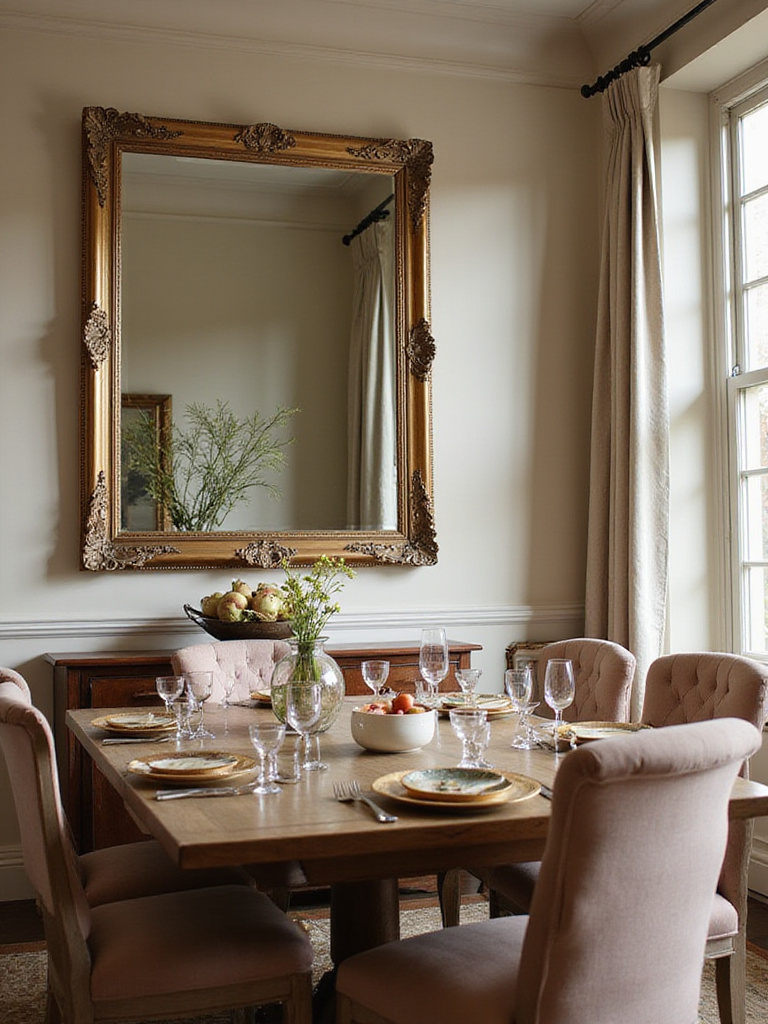
The reflective surface also contributes to the room’s lighting scheme by bouncing light around the space, reducing shadows and creating a brighter, more open feeling. This is particularly valuable in dining rooms with limited natural light or those that feel cramped due to their proportions.
Mirror placement for maximum impact:
- Position opposite windows to reflect natural light
- Choose sizes that create significant visual impact
- Consider the reflected view when determining placement
The visual weight balances perfectly when a large mirror reflects the warm glow of your dining room lighting, effectively doubling the perceived spaciousness of the room.
13. Optimize Storage with a Stylish Sideboard or Buffet
A well-chosen sideboard provides essential storage for dining essentials while creating an additional surface for serving and display. This piece of furniture can significantly improve the functionality of your dining room by keeping linens, serving pieces, and seasonal items organized and easily accessible.
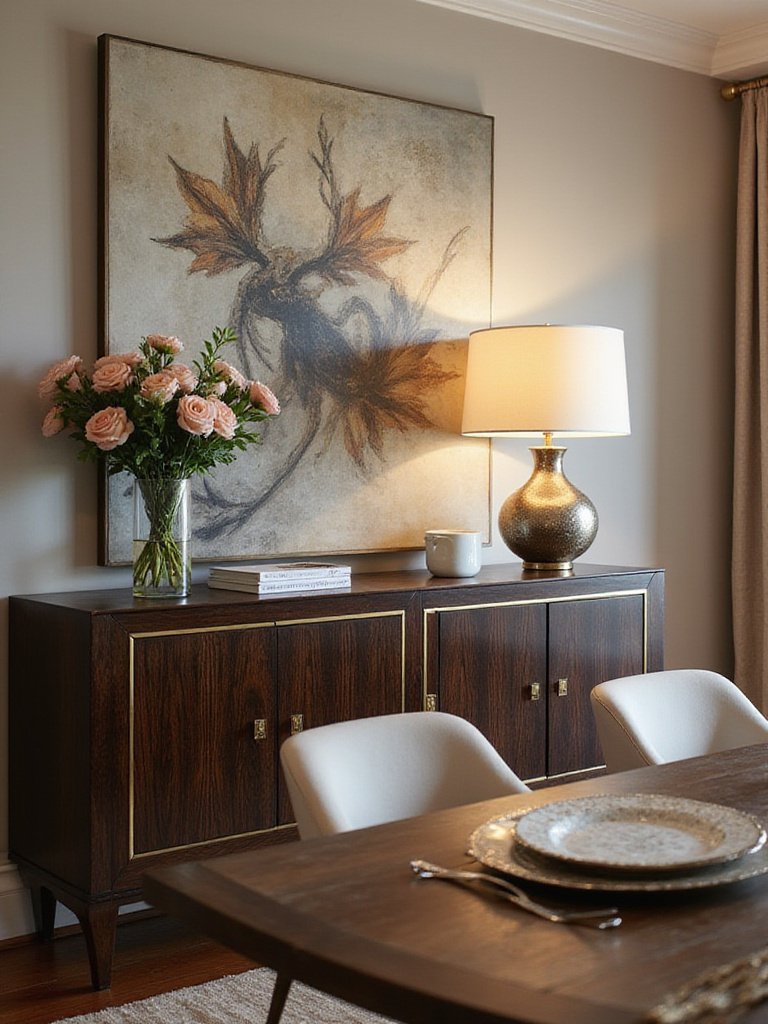
Beyond storage, a sideboard offers opportunities for styling and decoration, allowing you to display artwork, plants, or seasonal decorations that enhance the room’s aesthetic appeal. The horizontal surface also provides a convenient serving area during parties, reducing congestion around the dining table.
Storage optimization strategies:
- Use drawer dividers to organize small items efficiently
- Dedicate specific areas for different categories of items
- Style the top surface with a mix of functional and decorative elements
The sustainable journey of choosing quality furniture that serves multiple purposes demonstrates how thoughtful selection can reduce consumption while enhancing daily life.
14. Design a Versatile Centerpiece for Year-Round Appeal
A well-designed centerpiece serves as the focal point of your dining table while remaining flexible enough to adapt to different seasons and occasions. The key is creating a foundation that can be easily modified with seasonal elements, allowing you to refresh the look without starting from scratch each time.

Natural elements like branches, stones, or simple greenery provide timeless appeal that works across seasons, while candles add warmth and ambiance regardless of the specific decorative theme. The goal is creating something that feels intentional and beautiful without overwhelming the table or interfering with conversation.
Versatile centerpiece elements:
- Use neutral bases that work with changing seasonal accents
- Incorporate natural materials that age beautifully
- Choose elements that can be easily rearranged or updated
The composition comes together when you combine permanent elements with seasonal touches, creating a centerpiece that evolves naturally with your family’s celebrations and the changing seasons.
15. Integrate Greenery with Live Plants or Faux Botanicals
Plants bring life and natural beauty to your dining room while contributing to improved air quality and overall well-being. The presence of greenery creates a connection to nature that can reduce stress and promote a sense of calm during meals, supporting both physical and mental health.
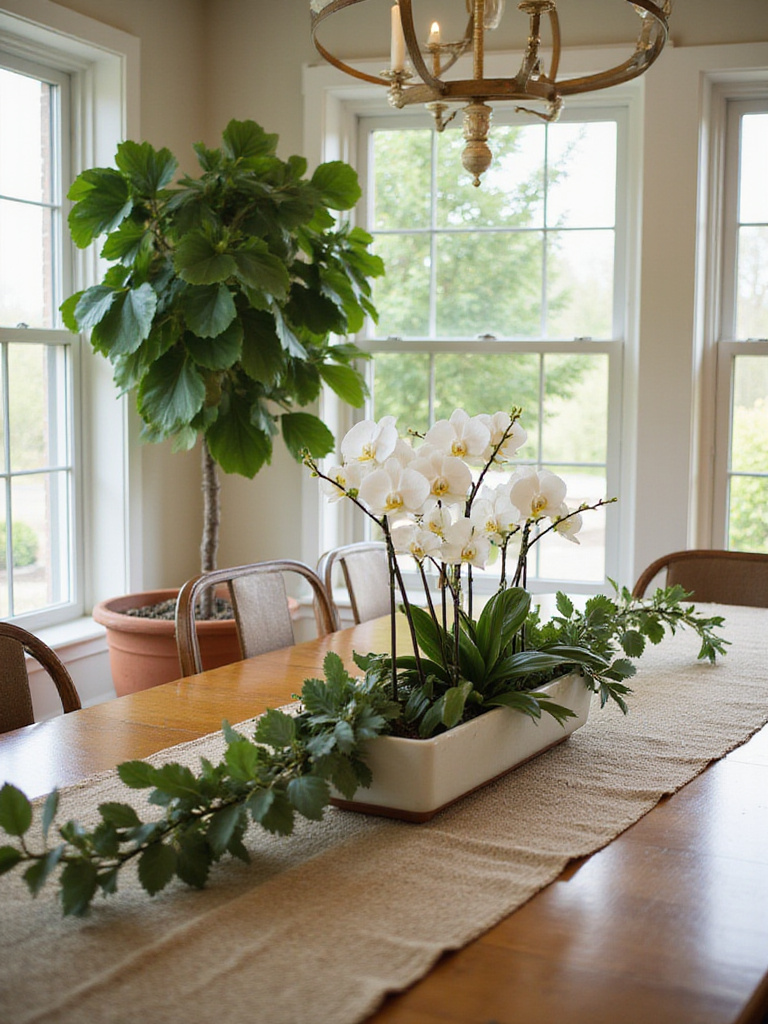
Whether you choose live plants or high-quality artificial alternatives, the key is selecting varieties and arrangements that complement your room’s scale and lighting conditions. Consider how the plants will look throughout their growth cycle and choose containers that enhance your overall design scheme.
Plant selection considerations:
- Match plant choices to available light conditions
- Choose containers that complement your design aesthetic
- Consider maintenance requirements for long-term success
The biophilic design elements in your dining room create an environment that naturally supports relaxation and mindful eating, enhancing the overall wellness benefits of shared meals.
16. Style a Bar Cart for Convenient Entertaining and Display
A thoughtfully styled bar cart adds both functionality and visual interest to your dining room while providing convenient access to beverages during meals and entertaining. This mobile station can be positioned where needed and styled to reflect your personal taste and entertaining style.

The key to successful bar cart styling lies in balancing function with aesthetics, ensuring that everything you need is easily accessible while creating an arrangement that looks intentional and beautiful. Consider the cart as a piece of functional art that enhances your room’s overall design.
Bar cart styling essentials:
- Group items on trays for easy organization and transport
- Include both everyday essentials and special occasion pieces
- Add decorative elements that reflect your personal style
The maker’s journey from functional necessity to stylish accessory shows how everyday items can be elevated through thoughtful curation and presentation.
17. Choose Durable, Easy-to-Clean Surfaces for Practicality
Selecting surfaces that can withstand daily use while maintaining their appearance over time is essential for a dining room that truly serves your family’s needs. Durable materials reduce maintenance stress and allow you to focus on enjoying meals rather than worrying about damage or stains.
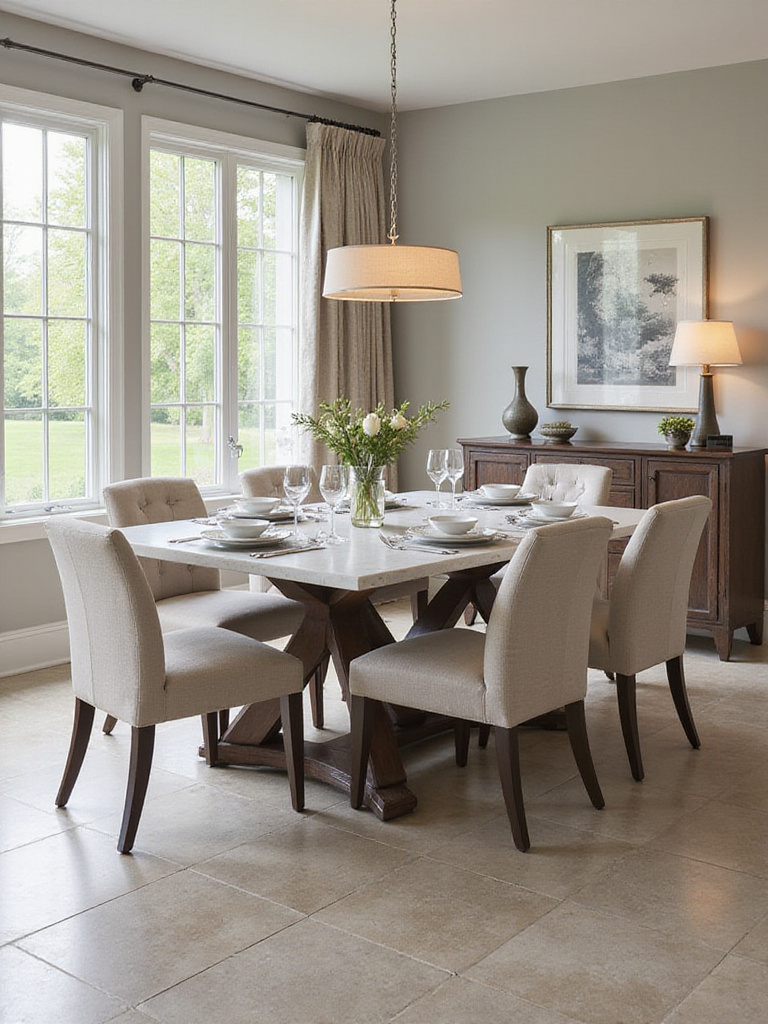
The investment in quality surfaces pays dividends in reduced replacement costs and ongoing maintenance time. Modern materials offer excellent performance without sacrificing aesthetic appeal, allowing you to create a beautiful space that also functions beautifully for years to come.
Durable material options:
- Quartz and engineered stone for superior stain resistance
- Performance fabrics that repel spills while maintaining comfort
- Sealed natural materials that combine beauty with protection
The environmental impact of choosing durable materials extends beyond your home, reducing waste and the need for frequent replacements while maintaining the beauty of your dining space.
18. Layer Textures for Depth and Visual Interest Throughout
Combining different textures throughout your dining room creates visual depth and tactile interest that makes the space feel rich and inviting. The interplay between smooth and rough, soft and hard, matte and glossy surfaces adds complexity that keeps the room visually engaging.

Texture also affects the acoustic properties of your dining room, with soft materials helping to absorb sound and create a more intimate atmosphere for conversation. The key is achieving balance—incorporating enough variety to create interest without overwhelming the space.
Texture layering strategies:
- Combine natural and manufactured materials for contrast
- Mix smooth and textured surfaces throughout the room
- Use lighting to highlight different textures and create depth
The unexpected environmental benefit comes from choosing natural textures that age beautifully, developing character over time rather than simply wearing out.
19. Incorporate Unique Servingware for Elevated Dining Experiences
Distinctive serving pieces transform ordinary meals into special occasions while reflecting your personal style and attention to detail. These functional art pieces serve as conversation starters while enhancing the visual appeal of your food presentation.

The right servingware can make simple dishes feel gourmet while adding personality to your table setting. Consider pieces that serve multiple purposes and work well with your existing dinnerware, creating a cohesive but not overly matched appearance.
Servingware selection principles:
- Choose pieces that reflect your personal aesthetic
- Prioritize versatility and multi-functional design
- Mix materials and styles for visual interest
The cultural heritage preserved in handcrafted serving pieces adds meaning to your meals while supporting artisans who maintain traditional techniques.
20. Personalize Your Space with Unique Artwork or Collectibles
Personal collections and meaningful artwork transform your dining room from a generic space into a reflection of your family’s interests, travels, and experiences. These personal touches create emotional connections that make the room feel truly yours while providing natural conversation topics for guests.
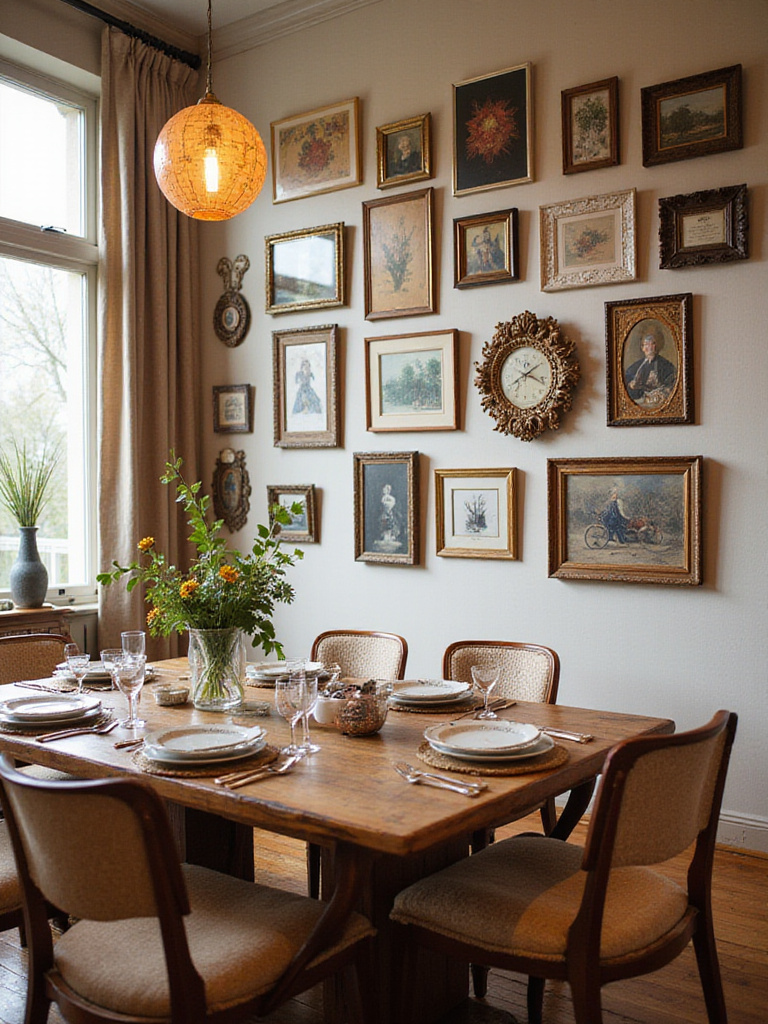
The key is curating rather than simply accumulating, choosing pieces that work together aesthetically while telling your story. Consider how different elements relate to each other and to the room’s overall design, creating displays that feel intentional and cohesive.
Personalization strategies:
- Group related items for greater visual impact
- Mix different types of objects for variety and interest
- Use lighting to highlight special pieces and create focal points
The evolution of your personal collection reflects broader cultural shifts toward valuing experiences and meaningful objects over mass-produced decoration.
Conclusion
Creating a dining room that truly serves your family’s needs requires balancing aesthetic appeal with practical functionality and personal meaning. These dining room decorating ideas provide a foundation for designing a space that supports both daily life and special occasions, encouraging connection and well-being through thoughtful design choices.
The most successful dining rooms are those that evolve with their families, adapting to changing needs while maintaining their essential character. By focusing on quality materials, comfortable seating, and personal touches, you create an environment that will continue to serve and delight for years to come. Remember that the best design decisions are those that support your family’s unique lifestyle and values.
Start with the ideas that resonate most strongly with your vision and needs, then gradually layer in additional elements as your space and style develop. Your dining room should ultimately reflect your family’s personality while providing a welcoming environment for all who gather there. The investment in creating a thoughtfully designed dining space pays dividends in countless shared meals and cherished memories.
